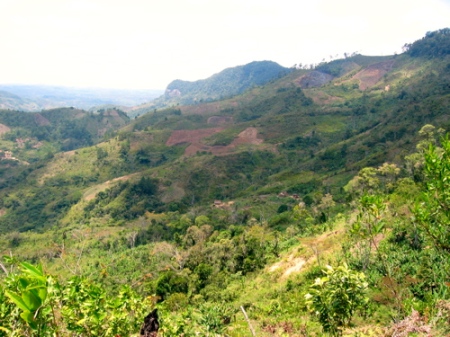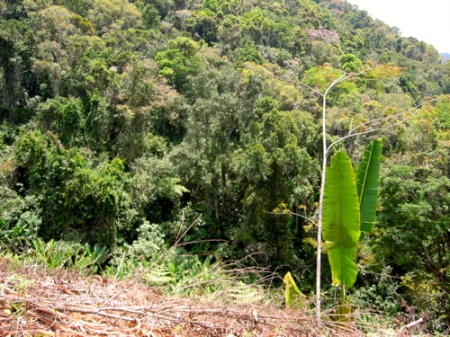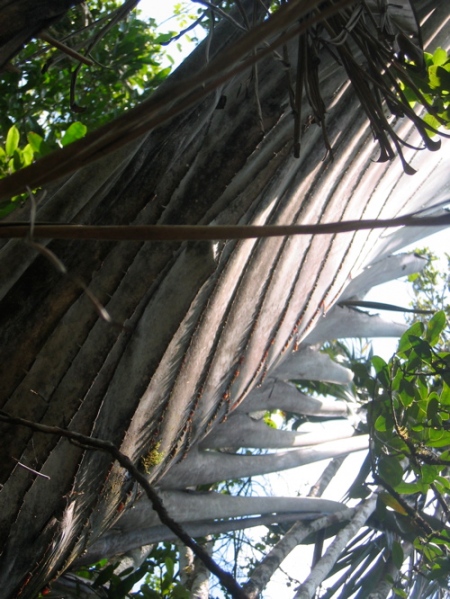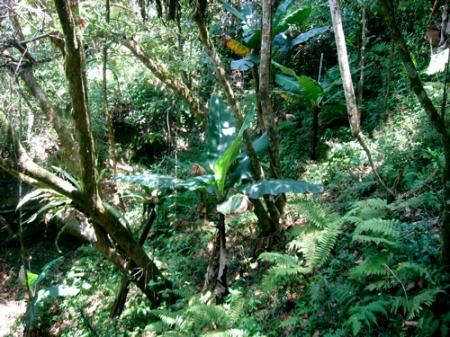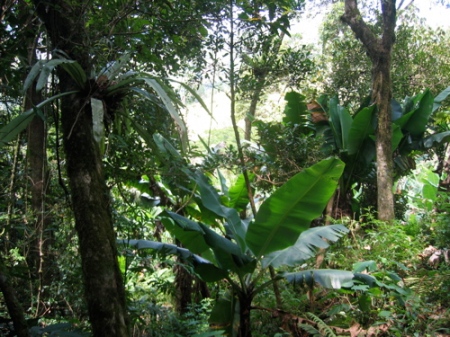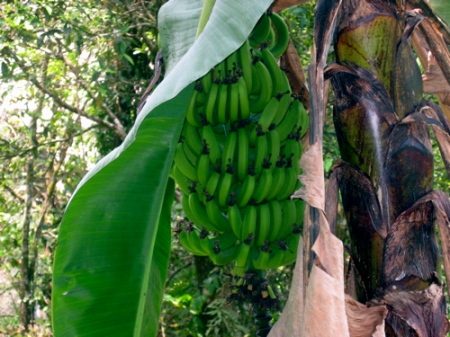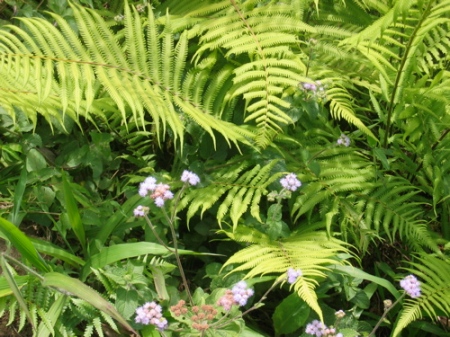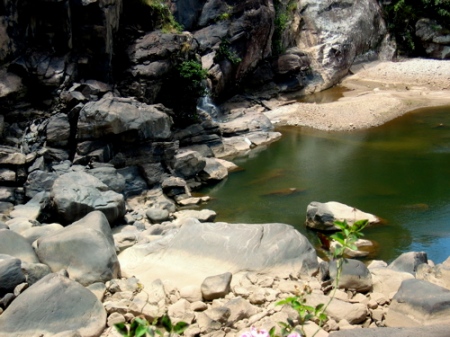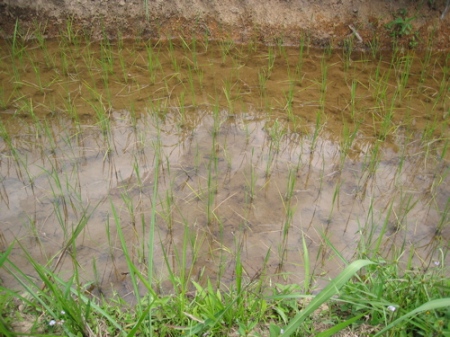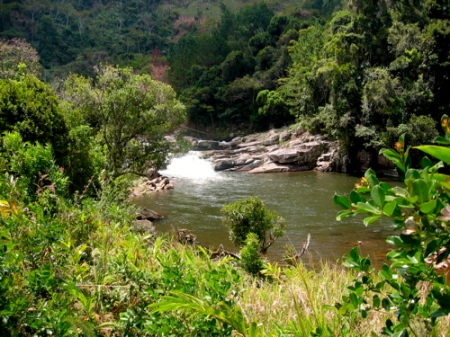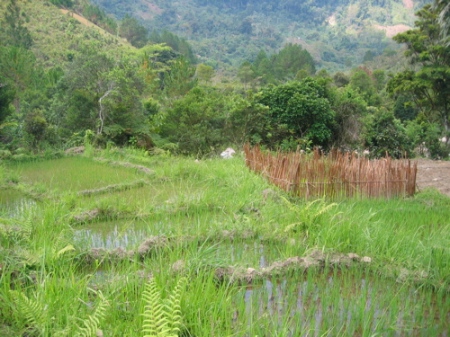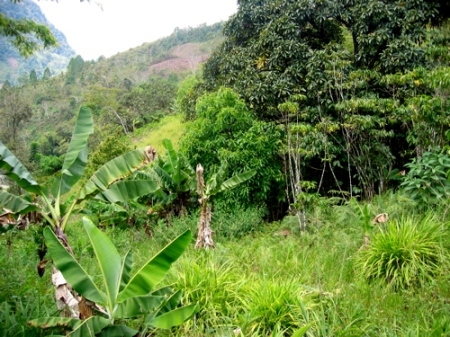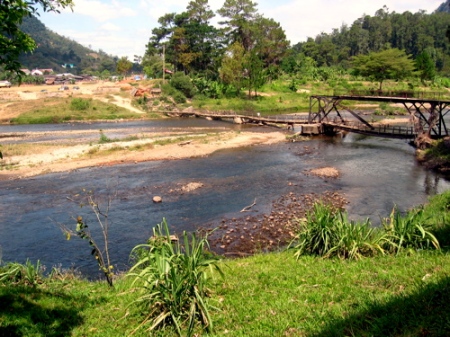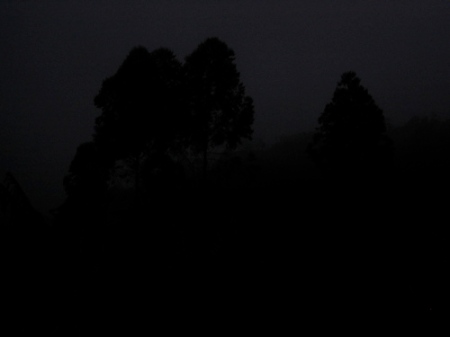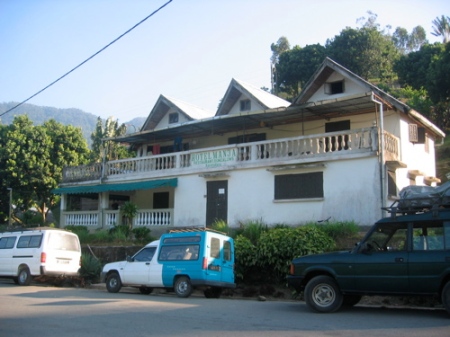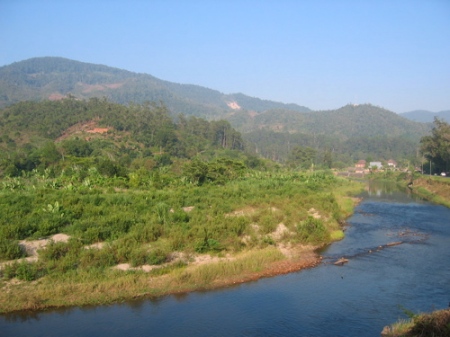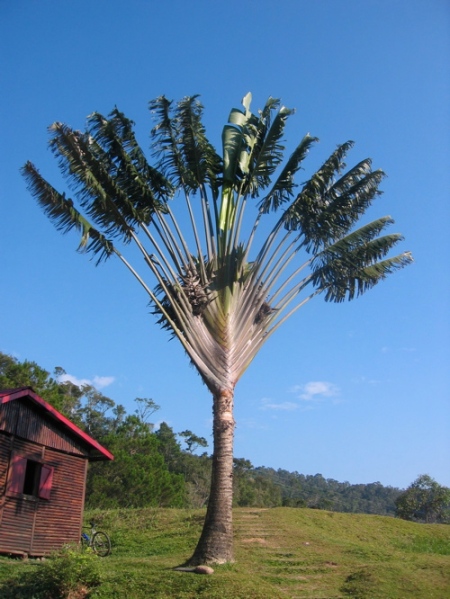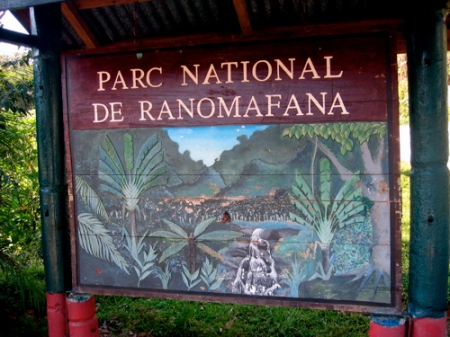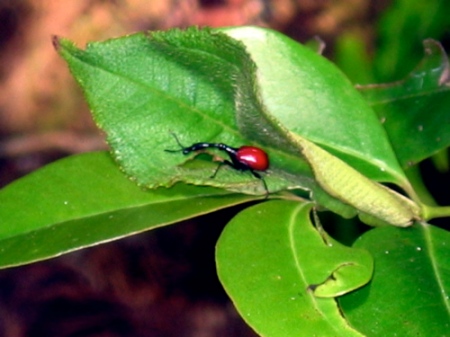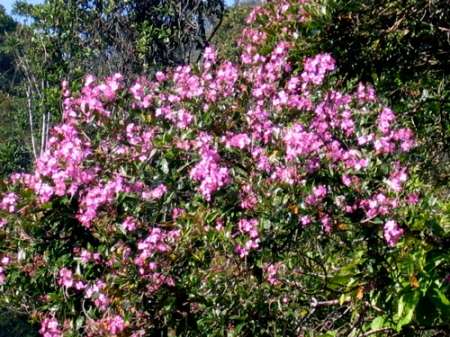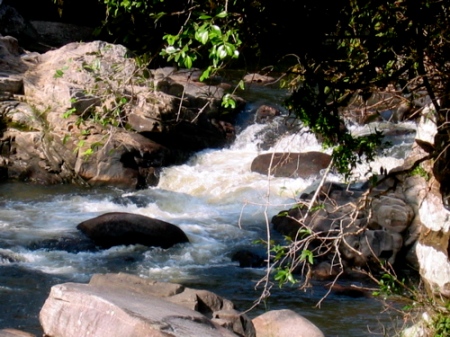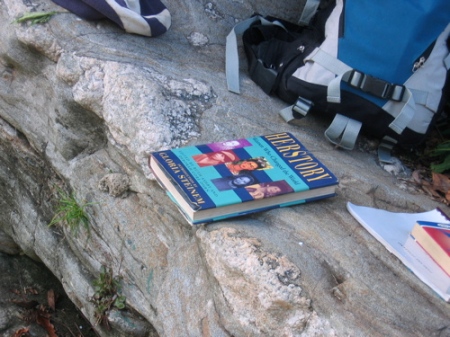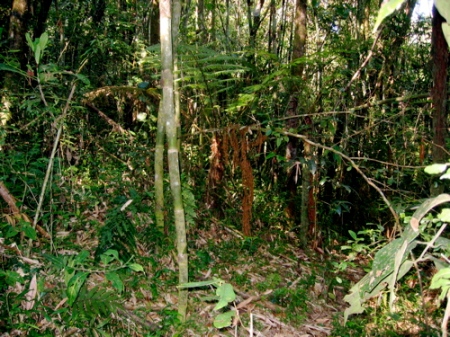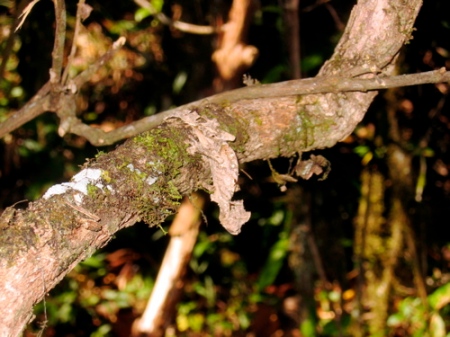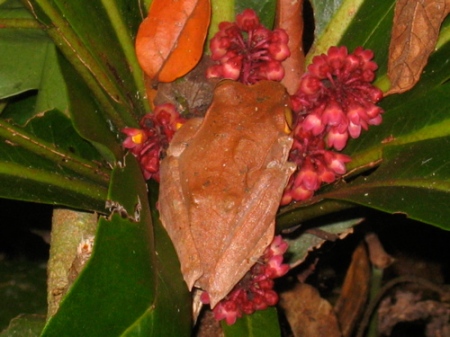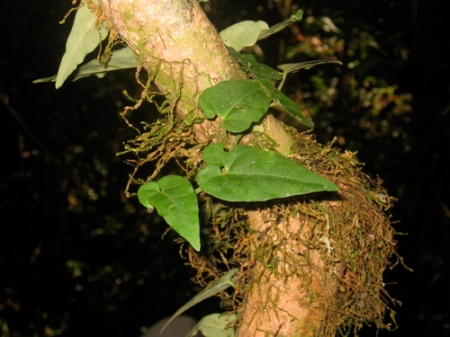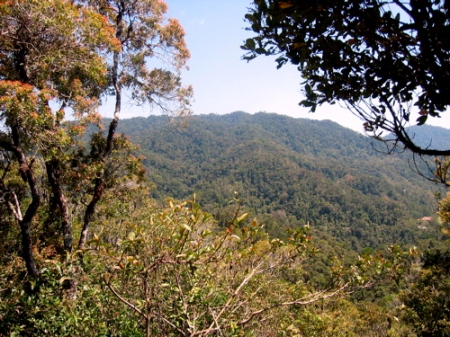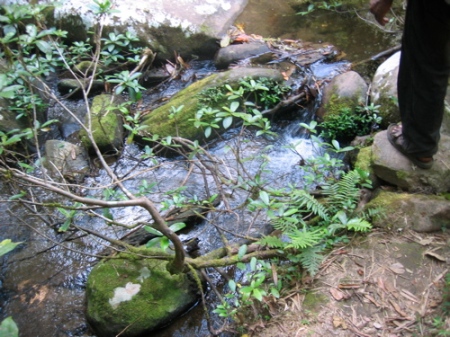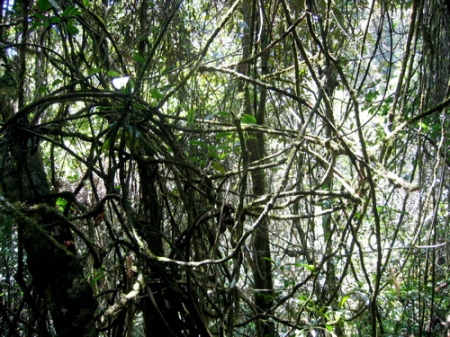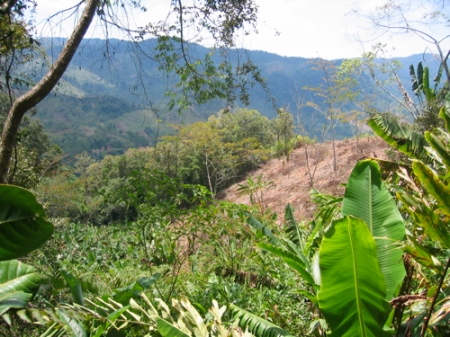We finally reached a clearing, where more banana trees were growing. What looked like pea plants had also been planted among the banana trees, making the most of the land.
We came to the river, and on the other side was a huge rock formation speckled with trees. There were several small waterfalls cascading down the rocks into a beautiful pool at the bottom. We were told that the rainy season, which was fast approaching, would turn this into a major waterfall. I asked the guide if we could go to the pool, and he said, “No – why would you want to?” I really didn’t know what to say to that. I guess stuff like this must seem kind of normal to him, but dang…
After the entire group had managed to descend to our location, we rested for a spell, posing for pictures in front of the waterfalls trying to avoid direct contact with sunlight. Then, we were off again.We stampeded through medium-sized forest, and then I looked over and there was a hut where some children were playing. A woman poked her head out. We were hiking through these people’s yard! I felt a little tacky about it, but they didn’t really seem too concerned, so on we went, through their rice paddies. Lots of rivulets were trickling water through a system that fed water to the various paddies, and we stepped carefully in order to keep from toppling over onto the weak-looking plants.
We passed through several types of plantations – coffee, pineapple, casaba – until we finally reached the edge of town. “This is the President’s house when he visits the pools,” the guide said, pointing. It was nothing spectacular – it looked like a regular ranch-style house you’d find anywhere. The only thing that made it stick out was the bizarre air conditioning units that were attached. I had never seen anything like them – they were window units, but looked as if they were from 1960. They were enormous.
We walked by the President’s home and an untended garden and then saw the hot pool. It was just a plain swimming pool by appearance, but the water came from a hot spring. Two tourists bobbed lazily.
After our intense hike that had taken us through the park and beyond, we were given the opportunity to dip into the hot pool, which sounded like an absolute nightmare to me. Nothing spells certain doom more intensely than bobbing in an 80 degree pool with a gaggle of tourists after rooting through a muggy, swampy rain forest. Am I right?
A few stayed, but the rest of us went back to the hotel and sipped Coca-cola on the front porch while talking about how amazing the rain forest had been. Most of us were excited about the ‘night hike,’ but a few people had decided that they had seen enough of that rain forest – it would be the same at night, only darker.
Me, I was going to get the most for my money, so I got my flashlight, my umbrella and my emergency poncho and met the rest of the group down by the bus, raring to go see some mouse lemurs, fossas and Aye-ayes.
Well, it WAS the same only darker. And wetter. And very, very crowded. They led us up to Belle Vue, where it turns out they had basically partially tamed one mouse lemur and one fossa to turn up at certain times and in specific alcoves of the forest. Making their guest appearances, the creatures would get tossed some pellets of cat food. They’d pose and prance and act fancy for the cameras and then slink back into the wild.
We were all crammed into a very thin path where these animals were peeking out of the trees, and a group of French tourists, all wearing matching white rain slickers with a hideous ‘Adventure Tours’ logo on the back, entered our zone. I was horrified by the tackiness. Jill, a woman in the group, exclaimed that she didn’t care what happened, she would never, EVER wear a matching poncho with a travel group – and I agree with her. They all looked like – what’s the polite word? – assholes.
And they acted like it, too. There were probably twelve of them, and they would stampede from one viewing station to the next, shoving anyone who wasn’t wearing one of their identifying ponchos out of the way – they and only they were entitled to see these nocturnal creatures, damn it!
I got sick of the whole thing. Yes, I saw one – ONE – mouse lemur and some grubby little grey thing that was supposed to be a fossa, but I would much rather have waited back at the hotel with the ladies who, when we returned from our Trek Into Damnation, were playing a very spirited game of cards on the porch.
We all had a delicious dinner – I had spaghetti and tomato sauce – and then retired. We were going to be off the next morning – early, of course – so we could get to Ambalvao – hub of Malagasy paper making – in time to see its wonders.

